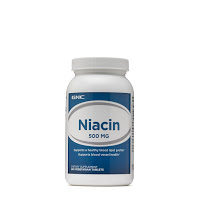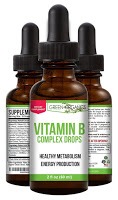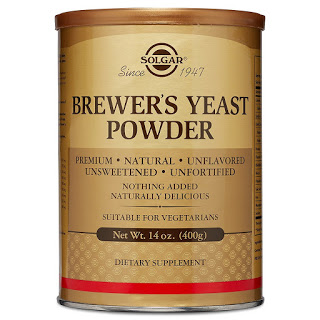Friday, February 2, 2018
There are four easy ways to supplement your bird or flock’s diet with niacin (vitamin B3) if you feel it is necessary: tablets, liquid, vitamin packet or Brewer’s Dried Yeast. We will explain how to supplement with each of these.
We are going to assume:
1) Your current feed has no niacin and therefore we we have supply 100% of their niacin needs. This is not accurate as all poultry feeds have some niacin but this way you know the maximum you should supply and we found no research that indicates a double or triple dose of niacin will harm your birds.
2) Your bird is eating about .35 pound of feed a day. This is typical of a Pekin at about three weeks of age when niacin deficiencies normally appear. Other breeds are probably eating .2-.3 pounds per day at the same age and an adult laying Pekin is eating about .45 pounds per day.
We are going to assume:
1) Your current feed has no niacin and therefore we we have supply 100% of their niacin needs. This is not accurate as all poultry feeds have some niacin but this way you know the maximum you should supply and we found no research that indicates a double or triple dose of niacin will harm your birds.
2) Your bird is eating about .35 pound of feed a day. This is typical of a Pekin at about three weeks of age when niacin deficiencies normally appear. Other breeds are probably eating .2-.3 pounds per day at the same age and an adult laying Pekin is eating about .45 pounds per day.

If your duck is eating .35 pounds of feed per day and they need about 55 parts per million (ppm) of niacin in their feed, this means they need about 9 mg of niacin a day (.35 x 55 / 1,000,000 x 454 x 1000). If your duck or goose is eating more or less than .35 pounds of feed per day, just remove the .35 from this formula and replace with how much your duck or goose is eating a day in pounds.
Tablet
Most tablets contain 500 mg of niacin. So if you divide 500 by 9 you get 55. This means that one tablet can supply enough niacin for 55 doses. Those 55 does can be used for 55 ducks in one day or 55 days for one duck. Or you can simply mix it into feed. If one dose is for .35 pounds of feed, then one tablet is for 19 pounds of feed (.35 x 55). Just make sure you grind the tablet well and ensure it is mixed thoroughly in the feed.
Liquid
Tablet
Most tablets contain 500 mg of niacin. So if you divide 500 by 9 you get 55. This means that one tablet can supply enough niacin for 55 doses. Those 55 does can be used for 55 ducks in one day or 55 days for one duck. Or you can simply mix it into feed. If one dose is for .35 pounds of feed, then one tablet is for 19 pounds of feed (.35 x 55). Just make sure you grind the tablet well and ensure it is mixed thoroughly in the feed.
Liquid

In one liquid supplement product we found, there were 12 mg of niacin in 10 drops of liquid. This means that each drop has 1.2 mg of niacin (12 / 10). Therefore, the daily dosage is about 8 drops (9 / 1.2). The problem with adding niacin to the water is that ducks typically don’t drink all the water they use. How much do your ducks splash and waste? Of course if you use nipple waterers waste is minimal and you can assume they drink all the water they use. Then you can add liquid niacin to their water. As they drink about .17 gallons per day at this age, then you need to add 47 drops per gallon of drinking water (1 / .17 x 8). Of course you can always add eight drops to each duck’s feed each day. But don’t mix more than one day at a time as the increased moisture might lead to mold which is not good for waterfowl.
Poult Vitamin and Mineral Packet
Another alternative would be to use the PoultVitamin and Mineral Packet we sell. This packet has 7500 mg of niacin in it and is designed to be added to 128 gallons of water or 1/2 teaspoon will treat 3 gallons of water. If you treat using this method, your birds will be consuming about 10 mg of niacin a day (7500 / 128 x .178) in addition to supplemental levels of other vitamins and minerals.
Brewers Dried Yeast
There are two types of Brewers Dried Yeast – human grade and livestock grade. Human grade has 5 mg of niacin per 15 grams of yeast (one tablespoon). Livestock grade has 1.5 mg per 15 grams of yeast. So if your duck needs 9 mg per day, they need slightly less than two tablespoons of human grade (9 / 5) or 6 tablespoons of livestock grade yeast (9 / 1.5) per day. If you want to mix the yeast in 50 pounds of feed, you would need to add 285 tablespoons of human grade yeast (50 / .35 x 2) or 855 tablespoons (50 / .35 x 6) of livestock grade yeast. As there are 64 tablespoons in a quart, this amounts to 4.5 quarts of human grade or 13 quarts of livestock grade yeast added to each 50 pounds of feed. As this is a significant amount of feed you have added to a balanced ration, you have now thrown off the balance of all other nutrient levels. Hence it is probably best to add additional niacin with tablets, vitamin packets or liquid niacin.
Poult Vitamin and Mineral Packet
Another alternative would be to use the PoultVitamin and Mineral Packet we sell. This packet has 7500 mg of niacin in it and is designed to be added to 128 gallons of water or 1/2 teaspoon will treat 3 gallons of water. If you treat using this method, your birds will be consuming about 10 mg of niacin a day (7500 / 128 x .178) in addition to supplemental levels of other vitamins and minerals.
Brewers Dried Yeast
There are two types of Brewers Dried Yeast – human grade and livestock grade. Human grade has 5 mg of niacin per 15 grams of yeast (one tablespoon). Livestock grade has 1.5 mg per 15 grams of yeast. So if your duck needs 9 mg per day, they need slightly less than two tablespoons of human grade (9 / 5) or 6 tablespoons of livestock grade yeast (9 / 1.5) per day. If you want to mix the yeast in 50 pounds of feed, you would need to add 285 tablespoons of human grade yeast (50 / .35 x 2) or 855 tablespoons (50 / .35 x 6) of livestock grade yeast. As there are 64 tablespoons in a quart, this amounts to 4.5 quarts of human grade or 13 quarts of livestock grade yeast added to each 50 pounds of feed. As this is a significant amount of feed you have added to a balanced ration, you have now thrown off the balance of all other nutrient levels. Hence it is probably best to add additional niacin with tablets, vitamin packets or liquid niacin.

As stated earlier, these formulations are for a bird that is not getting any niacin in its feed. This is not realistic so if you are wanting to merely supplement in case your feed is short in niacin, then you may want to add half the recommended amounts of supplemental niacin. In addition, niacin deficiency problems normally only occur when your birds are growing at their most rapids rates - from two to seven weeks of age. Therefore, supplementation is rarely needed past ten weeks of age.
Comments
We had goslings showing a Niacin deficiency. We tried all the above options but only your Poult Pack did the trick and corrected the issue. It was the only solution for a niacin deficiency that worked for our birds and we routinely give it to all our hatchlings and have had consistently healthy, strong goslings.
DK, Saturday, June 3, 2023